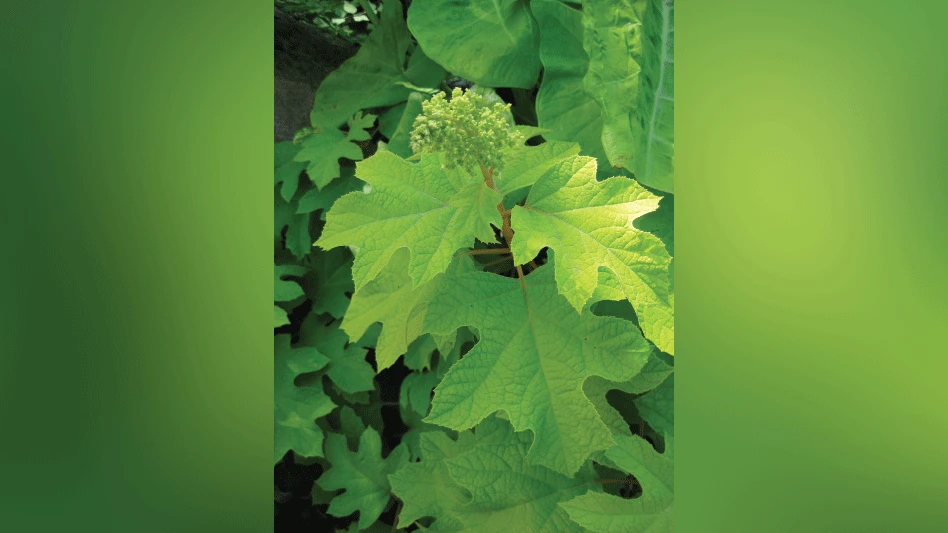
Photos: Mark Dwyer

I’m an unabashed advocate for the use of oakleaf hydrangeas in the landscape and became a huge fan of ‘Little Honey’ about 15 years ago as I’ve closely observed two specimens slowly growing at Olbrich Botanical Garden in Madison, Wisconsin. Found in Olympia, Washington (1999) as a branch sport of the classic variety ‘Pee Wee,’ this compact selection exhibits a strong, golden-yellow color on the bold foliage in spring. With the heat of summer (or in more shade), the coloration fades to a respectable chartreuse. It’s important to mention that this variety takes its time filling out, but patience is ultimately rewarded.
Oakleaf hydrangeas (Hydrangea quercifolia) are native to a wide area of the Southeastern U.S. and thrive in moist soils that are organically rich and well-drained. Although both heat and humidity tolerant, consistent watering is absolutely essential and the early coddling of younger specimens is warranted to include sheltered locations and winter protection. ‘Little Honey’ is a compact selection ultimately reaching about four feet tall and five feet wide in time. The white, summer blooms are dense, conical flower heads that are 4-7 inches long. The flowers might get a tinge of pink in fall. Pruning is best after flowering is complete as flowers appear on old wood.
The bold foliage of ‘Little Honey’ is what makes it so unique. The oak-shaped leaves have five lobes and serrated margins. Avoid too much sun to maintain the best golden foliage hue. In too much shade, this plant appears as a clean chartreuse but some degree of direct or dappled sunlight will really bring out the best gold coloration. Late afternoon shade is the ideal situation to maintain color intensity for the longest duration. As with other varieties of this species, the late-to-arrive fall coloration can be a very nice blazing red, orange or maroon but is certainly variable. With age, the stems get a nice exfoliating appearance and are attractive in winter. This plant does have some susceptibility to leaf spot and powdery mildew but good air circulation will help. This plant exhibits some toxicity to animals although deer are not entirely thwarted.
Get curated news on YOUR industry.
Enter your email to receive our newsletters.
Explore the November 2024 Issue
Check out more from this issue and find your next story to read.
Latest from Nursery Management
- Sam Hoadley talks about Mt. Cuba Center's latest evaluation of Solidago sp. for the Mid-Atlantic region
- Countdown to shutdown
- From growing plants to growing people
- Weed Control Report
- Advocacy in action
- Rare Life Plants: A place for the unique
- Crisis of confidence
- A letter from the sponsor: Janna Beckerman, Envu






